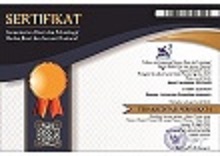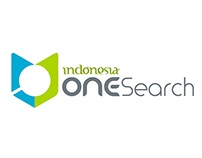IDENTITAS KAWASAN KAMPUNG PARALON DI PERMUKIMAN PADAT MELALUI KONSEP ECOVILLAGE Studi Kasus: Kampung Paralon Desa Bojongsoang Kabupaten Bandung
Abstract
Abstract: Architecture as one of the fields that cannot be separated from how to process space is very appropriate in supporting the Eco Village program because the conception of space in the field of architecture has a three-dimensional conception. Through understanding the concept of three-dimensional space with limited land owned by each citizen does not mean that the community cannot cultivate their land into productive land, namely making agricultural land (agriculture).
This makes observers interested in researching villages that have long been built, but are now blocked by housing that was once an empty space (in this case rice fields) in Bojongsoang Village, Bojongsoang District, Bandung Regency as a form of observer participation in developing an urban farming approach to achieving sustainability (sustainable).
The purpose of this study was to find out which Eco Village models exist in the region Paralon Village as an Eco-Architecture concept in supporting the development of Sustainable City, as one of the eco-architecture models in urban villages by utilizing the land and space of each community member.
Keywords: Eco Village; Sustainable City; Settelment
Abstrak: Arsitektur sebagai salah satu bidang yang tidak dapat dipisahkan dari cara mengolah ruang sangat tepat dalam mendukung program Eco Village karena konsepsi ruang dalam bidang arsitektur memiliki konsepsi tiga dimensi. Melalui pemahaman konsep ruang tiga dimensi dengan lahan terbatas yang dimiliki oleh setiap warga negara tidak berarti bahwa masyarakat tidak dapat mengolah lahan mereka menjadi lahan produktif, yaitu membuat lahan pertanian (pertanian).
Hal ini membuat para pengamat tertarik meneliti desa-desa yang telah lama dibangun, tetapi sekarang dihambat oleh perumahan yang dulunya merupakan ruang kosong (dalam hal ini sawah) di Desa Bojongsoang, Kabupaten Bojongsoang, Kabupaten Bandung sebagai bentuk partisipasi pengamat dalam mengembangkan suatu pendekatan urban farming untuk mencapai keberlanjutan (sustainable).
Tujuan dari penelitian ini adalah untuk mengetahui model Eco Village yang ada di wilayah Desa Paralon sebagai konsep Eco-Architecture dalam mendukung pengembangan Kota Berkelanjutan, sebagai salah satu model eco-architecture di desa-desa perkotaan dengan memanfaatkan lahan dan ruang dari setiap anggota komunitas.
Kata kunci: Desa Ramah Lingkungan; Kota Berkelanjutan; PermukimanFull Text:
PDFReferences
Abel, Chris, 1997, Architecture and Identity, Architectural Press, Oxford.
Creswell, J. W. (1998). Qualitative Inquiry and Research Design. London: Sage Publications.
Ischak, M., Setioko, B., & Gandarum, D. N. (2018). Peran Place Identity Dalam Menciptakan Community Resiliance. Jurnal Arsitektur Zonasi, 1(2), 77–86. https://doi.org/http://10.17509/jaz.v1i2.12254
Permana, A. Y. (2011). Penerapan Konsep Perancangan Smart Village Sebagai Local Genius Arsitektur Nusantara. Komposisi, 9(1), 24–33.
Permana, A. Y. (2012). Eco-architecture Sebagai Konsep Urban Development di Kawasan Slums dan Squatters Kota Bandung. (September), 1–11. Semarang.
Permana, A. Y., dan Wijaya, K. (2013). Education City As Identity of Bandung City. International Conference on Urban Heritage and Sustainable Infrastrcture Development (UHSID), (November 2013), 15–19. Semarang: Architecture Departement of Diponegoro University.
Poerbo, H. (1999). Lingkungan Binaan Untuk Rakyat. Bandung: Yayasan AKATIGA.
Rahmat, A., Prianto, E., dan Sasongko, S. B. (2018). Studi Evaluasi fenomena Kebakaran Pada Rumah Tinggal Di Pemukiman Padat. Jurnal Arsitektur Zonasi, 1(2), 112–122. https://doi.org/http://10.17509/jaz.v1i2.13560
Rapopot, Amos, 1969, House Form and Culture, Prentice-Hall International Inc., London.
Rossi, Aldo, 1982, The Architecture of The City, MIT Press, Cambridge, Massachusetts, and London, England
UN–Habitat, 2003, The Challenge of Slums: Global Report on Human Settlements 2003, United Nations Human Settlements Programme, Nairobi.
UN-HABITAT, 2006, The to of the World’s Cities: The Millennium Development Goals and Urban Sustainability, Earthscan, London.
Zanhd, Markus, 1999, Perancangan Kota secara Terpadu, Kanisius, Yogyakarta
Zuraida, G. N., Wijaya, K., dan Sukardi, R. R. (2018). Keberadaan Activity Support Yang Mempengaruhi Aksesibilitas Pada Permukiman Di Sekitarnya. Jurnal Arsitektur Zonasi, 1(2), 106. https://doi.org/10.17509/jaz.v1i2.13509
DOI: https://doi.org/10.17509/jaz.v2i3.19873
Refbacks
- There are currently no refbacks.
Copyright (c) 2019 Karto Wijaya

This work is licensed under a Creative Commons Attribution-ShareAlike 4.0 International License.






